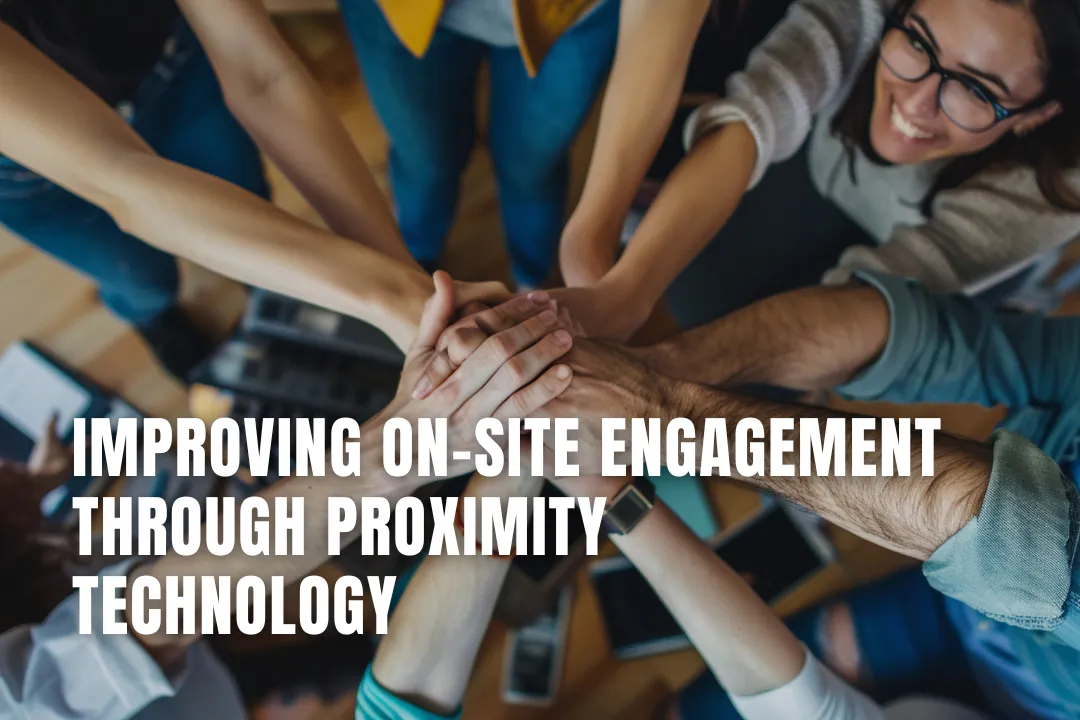
In an era when attention is fleeting and consumers demand more from each experience, events can't simply sit back and wait for people to be interested. Event planners are turning away from static booths and lengthy speeches, instead seeking out functional means to stimulate interaction, influence how humans flow through an area, and make it worthwhile there.
At the heart of this revolution is proximity technology, transforming behind the scenes how conferences, exhibitions, and corporate events engage with their audiences.
Proximity technology allows event staff to react to what's currently happening. It does this with instruments such as beacons, NFC or geofencing, essentially anything capable of identifying where someone stands in a place. Once implemented, you can then send useful information or initiate something pertinent according to location.
You’re not trying to wow people with the tech. It’s just there to help things run better. Maybe it points someone to a session nearby, helps them connect with others, or gives them content without them needing to ask. The sole goal of proximity technology is to make the experience smoother without anyone really noticing what’s happening behind the scenes.
How individuals flow through an event space contributes significantly to what they're doing at an event, yet this scarcely is ever talked about. This is the place where proximity technology comes to save the day. These event planners can know where people are, how long they live in the given areas, and how they travel between the topics. This makes it possible to respond to the behavior immediately and provide a more personal experience.
If a person hangs out around a booth, for instance, they might receive a personalized message or promotion immediately. Entering a session might initiate a check-in and push material directly to their phone. Talk about making an experience feel seamless and personal!
And to top it off, this technology is a real-time view of how event attendees are floating around, which zones receive the highest traffic, and when the venue receives the largest audience. This type of data is a treasure trove that can be used to make decisions regarding layout, timing, and assistance for upcoming events.
Set itineraries don't cut it for everyone anymore. Individuals want to experience events that align with their own objectives, pace, and interests. With proximity tech, event apps are not only for organizing a rocking schedule, they can truly take people through the day in a way that feels intimate and useful.
For example, if you're organizing a huge expo, proximity tech can provide your visitors with recommendations on what their time's worth based on what they've seen so far, who is around them, or the nature of their work. Perhaps someone they have been looking to meet arrives in the networking zone, and they receive a subtle heads-up. It's not about directions, it's more about making the day meaningful.
This sort of thing is already occurring at mass events globally. And with increasing platforms making international events available to wider audiences, there is even greater pressure to make the on-site experience a success. That's where proximity tools really excel, connecting the digital aspect of organizing to what's really going down on the ground, so nobody feels like they're just floating in and out of the crowd.
Since platforms such as Event Flare are making global events so much more accessible, the imperative to maximise on-the-ground encounters becomes even greater. Proximity tools fill the gap between online planning and on-the-ground attending, making attendees feel led, rather than lost.
Exhibitors usually find it difficult to measure the return on investment within events. Foot traffic is not always interesting, and lead capture is clunky at best. Proximity solutions rectify both issues by allowing passive data collection and active engagement.
With beacon-triggered interactions, exhibitors are able to collect visitor information automatically when someone comes near their booth, no scanning or forms needed. They can also push out personal content or schedule demos based on visitor behavior. This simplifies lead technology and affords exhibitors with clean metrics for engagement and conversion.
In addition, dwell-time analytics can screen how long site visitors engaged with a sponsor's booth, wherein most traffic were fascinated, and which times have been related to peaks in engagement. That's the extent of detail badge scans can not offer.
Proximity tech isn't handiest, approximately delivering an advanced revel in, it also aids in retaining things manageable. By tracking movement in real time, event organizers can study where people are gathering and intrude early to prevent things from becoming overcrowded. It equates to less ready, smoother movement, and a more secure environment for all concerned.
It’s additionally been beneficial in health-focused settings. After the pandemic, some events used it to keep an eye on numbers in certain areas and send out quick reminders when spaces started to get too full. It’s a straightforward way to manage risk without making a big deal out of it.
Similar articles: If you enjoy learning about new technology, you'll want to hear about this new way to attract new customers to your business.
Event strategies have evolved, and the gap among virtual and live is rapidly disappearing. Attendees do not wish to just take a seat passively and absorb, they're looking for connection, relevance, and a sense of participation. Proximity tech facilitates all that without over-engineering the experience.
From interactive touchpoints to real-time personalisation, these technologies are quietly raising the bar. It's not a case of high-teaching events for the sake of it, it's about making them feel more thought out, more interactive, and a whole lot more human.